Related Tags
Do vintage electric guitars really sound better with age?
Are the superior sonics commonly attributed to vintage electric guitars a happy consequence of the ageing process, or did golden-era instruments always sound that way?
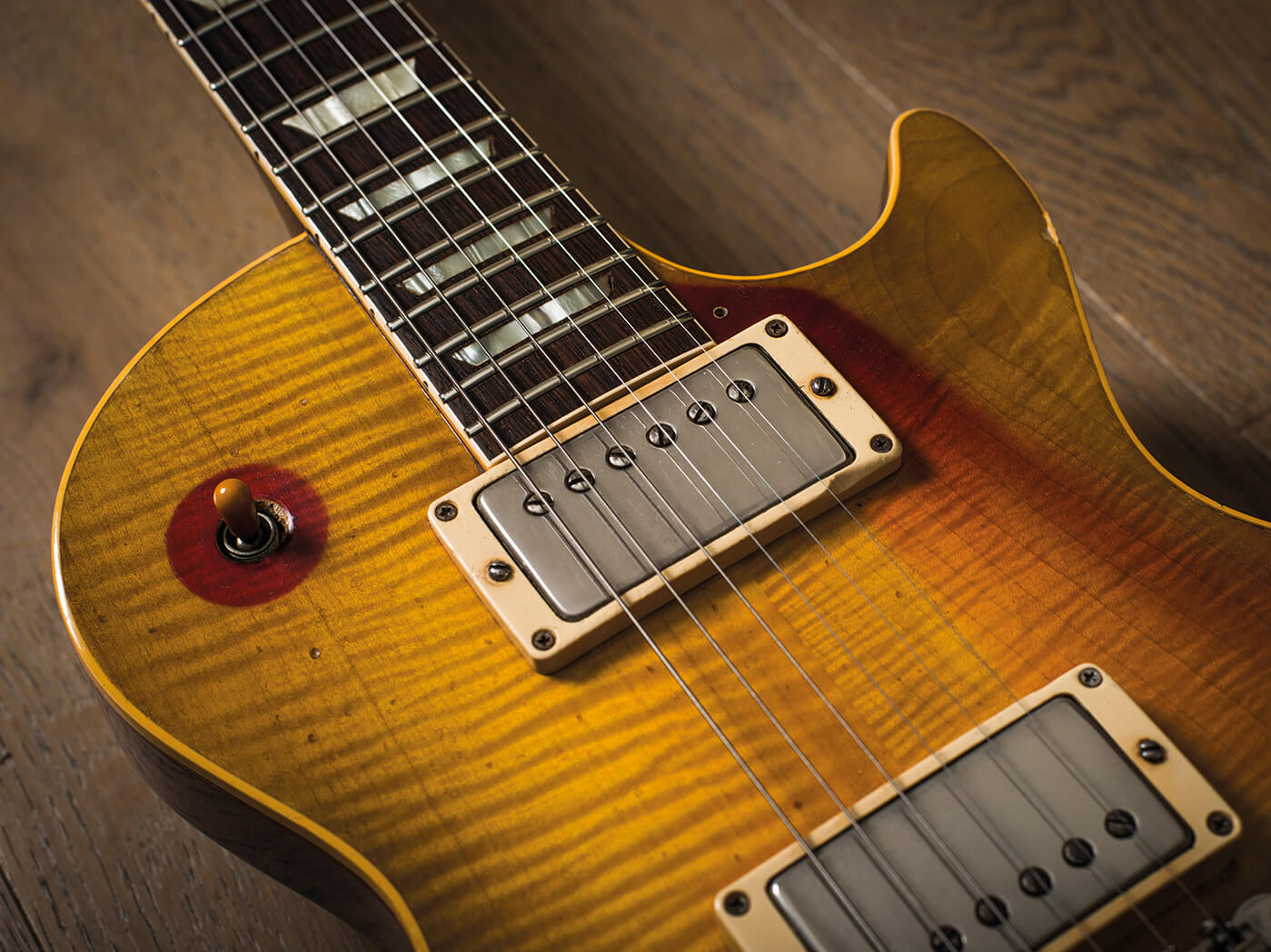
The secret of vintage tone is old wood, right? It’s certainly a belief prevalent in vintage-guitar circles and there are thriving businesses predicated on that hypothesis. But must you have vintage wood and, by extension, vintage guitars to achieve authentic vintage tone? And secondly, do electric guitars improve with age?
Let’s begin with Les Paul ‘conversions’ as a case study. For the uninitiated, this is an increasingly popular practice than involves taking a ‘lesser’ 1950s – or sometimes late 1960s – Les Paul and using it as a donor guitar to convert to 1958-’60 Les Paul Standard, aka Burst, specifications. Les Paul conversions are particularly interesting, because they’re a unique instance of major structural alterations and total refinishes being deemed acceptable to tone hounds. In effect, they test the ‘old wood’ hypothesis to destruction… sometimes literally.
Owning a real Burst is sheer fantasy for most of us, but a mid-50s Goldtop is a couple of PAFs and maybe a bridge away from being essentially the same guitar. Countless Goldtops have been converted into faux Bursts in recent times and it certainly makes sense financially, but can the same be said from a playing perspective?
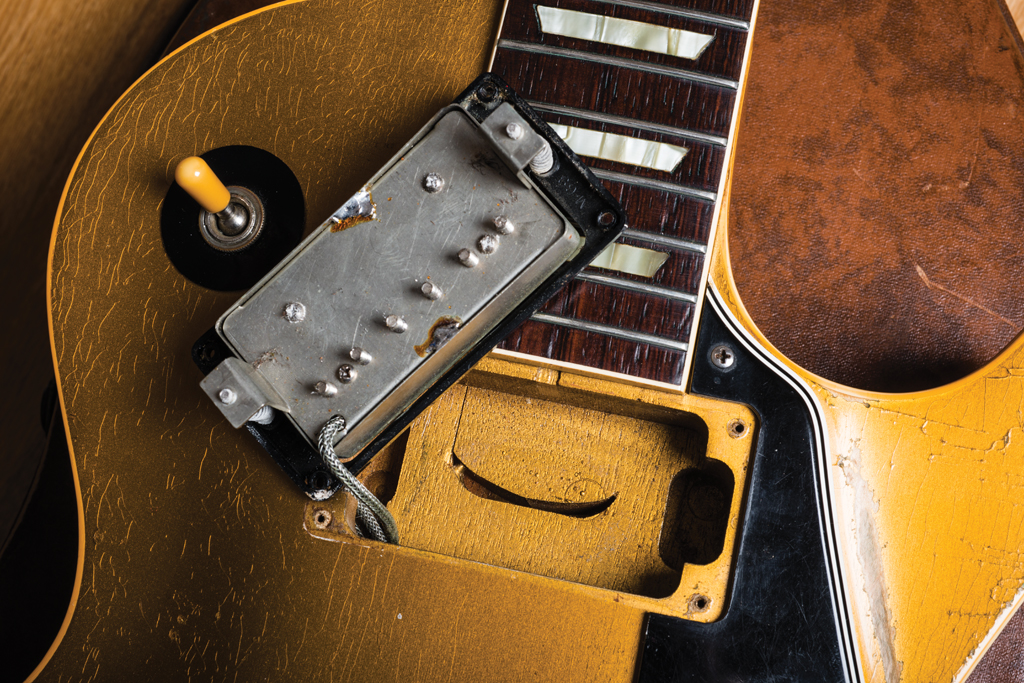
I recently tested this out with a friend’s ’53/’59 conversion loaded with vintage hardware and a set of modern PAF replica pickups. The converted instrument sounded a little flat and nowhere near as good as his Gibson Custom Collector’s Choice LP, also loaded with vintage hardware but additionally, a set of genuine vintage PAFs.
Unplugged, it was a different story – the conversion had a richer resonance and noticeably longer sustain. But as much as I appreciate the unplugged tone of a fine Les Paul, I think most guitarists will agree they sound better plugged in.
We transferred the PAFs to the conversion and it came to life. It also sounded better than the Collector’s Choice model when fitted with the same pickups, because the PAFs allowed its superior acoustic qualities to come through. This establishes two things. The wood itself cannot be disregarded entirely, but a recently manufactured Burst repro with a set of original PAFs and hardware can sound better than a genuine 1950s Les Paul with reproduction pickups.

I’ve conducted similar tests using a couple of original ’54 Goldtops and a Greco Goldtop conversion loaded with a set of 1953 P-90s and a 1950s wrapover bridge. I’ve even compared a Fender Custom Shop Stratocaster with a vintage bridge and a fully loaded vintage pickguard against an original ’63 Strat and installed genuine PAFs in a 1981 Greco.
Consistent results lead to clear conclusions. Providing the wood is of the correct type and of a similar weight, newer electric guitars equipped with vintage pickups and hardware can often sound almost indistinguishable from all-original vintage models. They can also sound superior to vintage guitars that have lost their original pickups and hardware.
Age concerns
On rare occasions, we encounter vintage guitars that are undeniably mind-blowing. It might seem plausible to attribute such great tone to the seasoning effects of age, but could that be a naïve and lazy assumption?
During our recent conversation, vintage-obsessed YouTube stars Doug and Pat made this telling point: “We might subscribe to the tonal differences being down to the quality of the wood, but not the age of the wood.” It’s a fine but crucial distinction.

There are obvious differences between lightweight ‘swamp’ ash and heavy northern ‘baseball bat’ ash, but nobody talks about the specific Louisiana bayou from which Fender’s timber suppliers sourced their lumber back in the 1950s. Even less attention is given to alder and when tonewoods are discussed in relation to Fenders, weight is considered to be more important than age.
Lightweight ash and alder body blanks are still widely available, so vintage Fender enthusiasts tend to focus their attention on pickups and, to a lesser extent, hardware. This strikes me as sensible, so long as opinions remain unswayed by marketing blurbs that reference Texas.
While the informed vintage Gretsch enthusiast may draw some distinction between three- and five-ply bodies, and various bracing methods, nobody has ever claimed there’s such a thing as ‘tone ply’. Fortunately, vintage Gretsch pickups remain relatively affordable and some of the Custom Shop guitars being produced under Stephen Stern’s guidance are right up there with – some might even say superior to – anything Gretsch has ever produced.

In the electric guitar world, the vintage wood cult centres primarily on Gibson more than any other manufacturer. In fact, it’s almost exclusive to solidbodies of the 1950s rather than semis or 1960s solidbodies. Some of the wood Gibson was using during the 50s has become almost unattainable and, as a result, fetishised.
Again, the focus is specific. Maple, if it is considered at all, is revered mostly for its appearance. Brazilian rosewood fingerboards have been off the menu since the 1960s, but any piece of wood that has been wrapped in plastic, glued onto a steel-reinforced substrate and had 22 pieces of metal hammered into it surely cannot exert that much tonal influence. When it comes to Les Pauls, it’s all about the mahogany.
Marvellous mahogany
Not all mahogany is created equal – and it seems that Gibson used various types. We have observed Burst weights from eight to 10lbs, and Les Paul aficionado Cosmo Verrico is among those who has noted that the colour varies. He associates the best tonal qualities with mahogany that has a specific ‘earthy red’ appearance.
He also suggests: “Sometimes, the colour looks more gold and those don’t sound as good. The earlier P-90 Goldtops tend to have the gold-colour mahogany and even if you stick a couple of PAFs on them, they still don’t come up to it.” If that’s true, then it’s caveat emptor when it comes to Burst conversions.
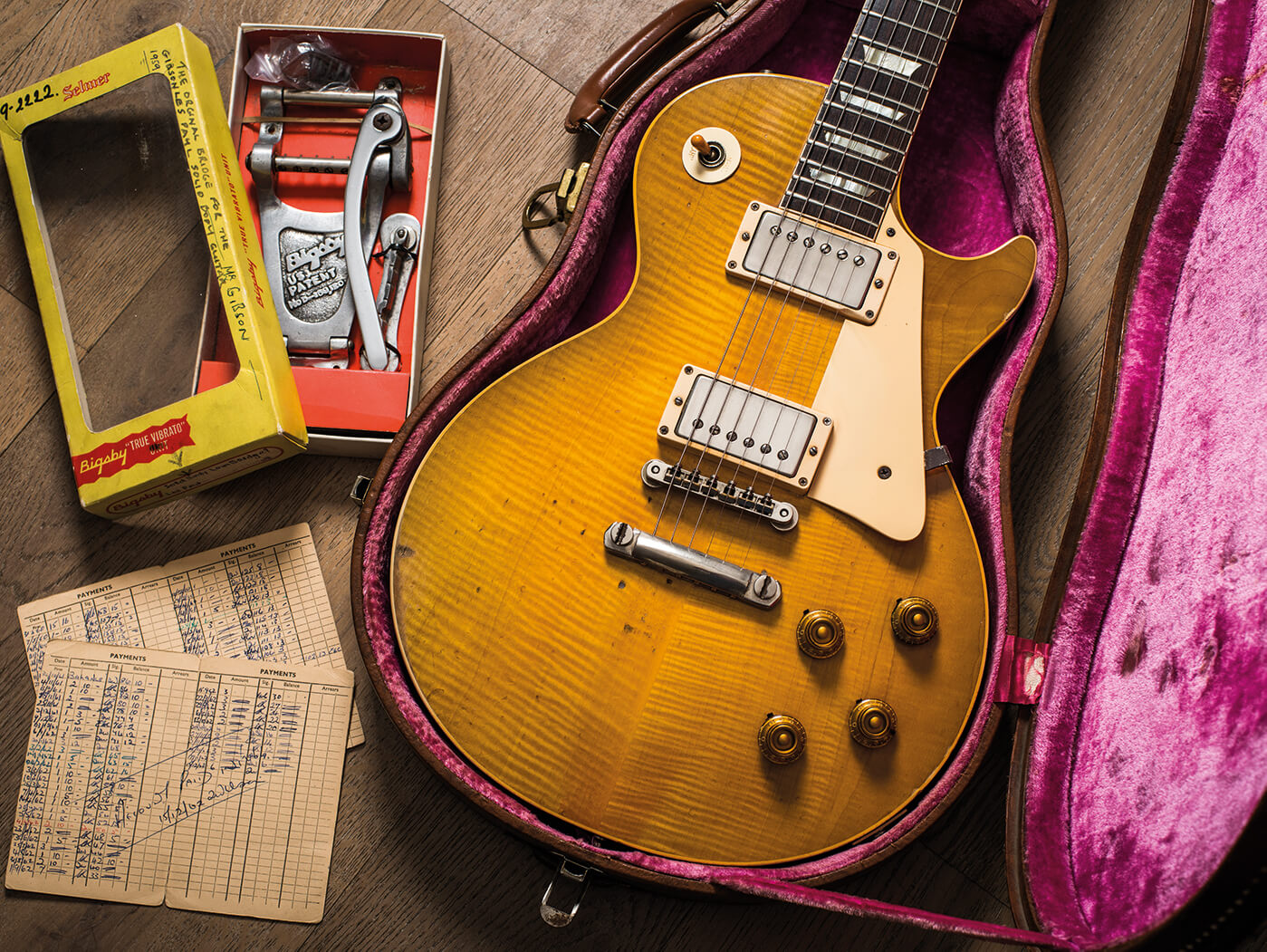
Much of the ‘mahogany’ used in modern guitars comes from Africa, and some don’t regard it as ‘true’ or ‘genuine’ mahogany. During the 1950s, Gibson used mahogany that could have been Cuban, Honduran or Brazilian – varieties that tend to be softer and lighter.
It has been suggested that Gibson’s mahogany was ‘old growth’ and was dried out slowly over decades rather than dried in a kiln. Given the timber quantities that Gibson must have been using, that seems implausible, but a lack of consensus suggests that nobody knows for sure. Perhaps the main beneficiaries of this pseudo-science, mythologising and magical thinking are those who have invested significant sums in vintage Gibsons.
It’s often suggested that old wood dries out, but the seasoning and drying processes are designed to reduce water content, not eliminate it. Wood tends to reach an equilibrium with its surrounding environment by continually absorbing and releasing moisture.
Although it may be possible to debunk the ‘dried out’ theory, it has been shown that other changes do occur within wood over time. Cut timber contains pitches, sugars and oils that eventually oxidise, evaporate and mineralise. Lignin binds the fibres and it eventually hardens like glue. The upshot is that timber gradually becomes lighter, stiffer and quicker to respond – all of which is good for tone.
Under normal circumstances, this process would take decades in a chunky electric guitar body and it may be inhibited by the finish. Assuming those bodies are still ageing, vintage guitars should still be sounding better with each passing year. Despite owning a few vintage instruments myself, I can’t honestly say I’ve noticed that.
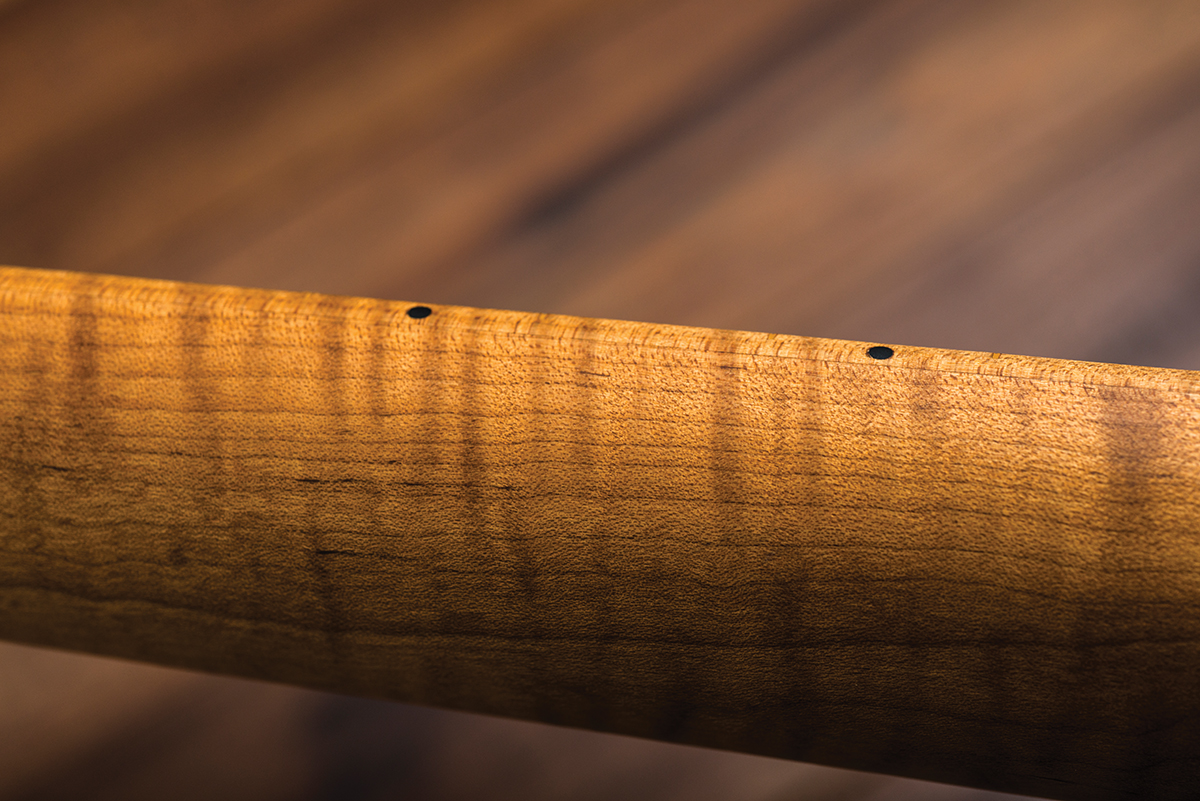
The structural changes are interesting and the process can be accelerated by baking the wood in an oxygen-free environment – a process known as torrefaction. I’ve played acoustics and electrics made with roasted timber and the results can be extremely impressive. Roasted maple has become commonplace, and we’re starting to see roasted pine and mahogany too.
If you don’t have the money for a vintage guitar – or the patience to wait half a century for your guitar to apparently start sounding good – the obvious solution is to buy an instrument made from reclaimed timber. Several noted guitar makers have been doing this for a while.
For example, Dennis Fano’s Novo brand builds remarkable electric guitars from tempered and reclaimed timber, and we have never encountered structurally similar guitars with more natural resonance. I’ve also played some recent ultra-high-end Les Paul replicas made from very old wood that already sound like they’re decades old.
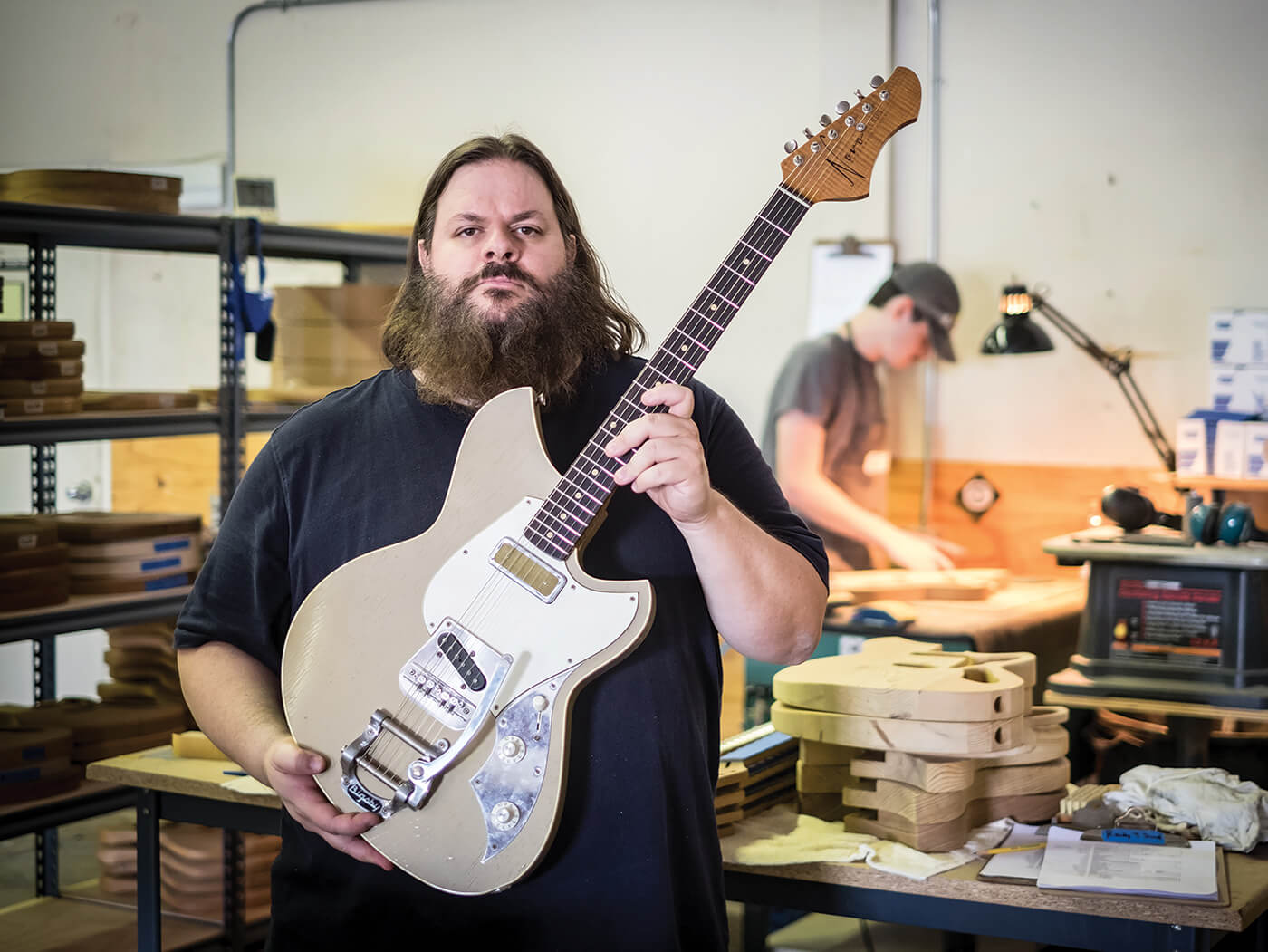
Final cut
If they suit your style, there’s some basis for suggesting that 1950s and early 60s electric guitars remain largely unsurpassed. I’d suggest this is a combination of comfortable weight, sublime neck profiles, superior hardware and pickups that have never been bettered. The thrill of playing a rock ’n’ roll artefact cannot be dismissed either.
I’d accept that correct wood of the appropriate weight is important, too, but it’s not the most crucial factor. The notion that electric guitar tone improves with age is entirely different and I’m unconvinced it stacks up.
When you listen to great guitar tones on landmark recordings, remember those guitars were barely second-hand at the time of recording, let alone vintage. Believing in the maturation theory means accepting that all those Gibsons and Fenders from the 1970s eventually started to sound incredible. Spoiler alert… they didn’t.
More tellingly, if all those pre-1965 guitars have continued to improve, like fine wine or single-malt whiskies, then modern players who still tour and record with them should sound noticeably better than their heroes did back in the day. Would anyone seriously suggest they do?
Check out more vintage guitars here.
